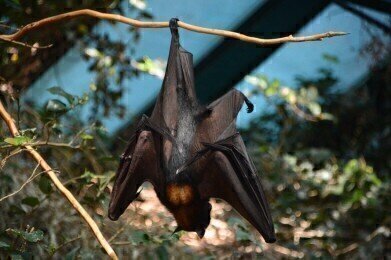Environmental Laboratory
Why Are Humans to Blame for the COVID-19 Outbreak?
May 25 2020
More commonplace and more careless contact between humans and animals is most likely to be the root cause of the ongoing coronavirus pandemic, according to a major new research paper. The study, which was undertaken collaboratively by scientists from the USA and Australia, traced 142 viruses back to their animal source over many years, cross-referencing those findings with the International Union for Conservation of Nature (IUCN) list of endangered species.
They discovered that domesticated animals such as cats, dogs, cows and goats were the most common type of virus carrier, thus suggesting that close contact with wildlife is a chief driver of viral infections among the human race. That hypothesis was backed up by the fact that species which have adapted well to human-dominated ecosystems, such as monkeys, bats and rodents, were also among the most commonly observed transmitters.
Too close for comfort
The study was published in the journal Proceedings of the Royal Society B at the beginning of last month. In their conclusions, the authors found that domesticated animals are eight times more likely to pass a virus to a human than a wild mammal is, while together with bats, rodents and primates, they account for 75% of all transmissions.
Indeed, bats – which are thought to be responsible for the current coronavirus crisis, the environmental implications of which are now unfolding in tandem with its fiscal ones – are linked to many other diseases on their own. Ebola, Marburg, Nipah and SARS all have their origins traced to this much-maligned creature.
Humans at fault
However, it’s the opinion of the authors of the study that the blame lies more with humans than animals. “Spillover of viruses from animals are a direct result of our actions involving wildlife and their habitat,” explained Christine Kreuder Johnson, lead author on the paper. “The consequence is they’re sharing their viruses with us. These actions simultaneously threaten species survival and increase the risk of spillover. In an unfortunate convergence of many factors, this brings about the kind of mess we’re in now.”
“We need to be really attentive to how we interact with wildlife and the activities that bring humans and wildlife together. We obviously don’t want pandemics of this scale. We need to find ways to co-exist safely with wildlife, as they have no shortages of viruses to give us,” she continued.
Proceeding with caution
In a disparate but related incident, over 200 wildlife groups have appealed to the World Health Organisation (WHO) to implement a total ban on wildlife markets and the use of animals in traditional medicines. They also recommend tighter regulation with regard to more widely accepted interactions with animals, including hunting and farming.
Cattle rearing, for example, causes a whole host of environmental problems. Not only do cows consume vast quantities of valuable resources (in land, water and feed), but they produce a staggering amount of methane emissions which act as a potent greenhouse gas and contribute to global warming, as well.
Digital Edition
IET 34.2 March 2024
April 2024
Gas Detection - Biogas batch fermentation system for laboratory use with automatic gas analysis in real time Water/Wastewater - Upcycling sensors for sustainable nature management - Prist...
View all digital editions
Events
Apr 30 2024 Melbourne, Australia
Apr 30 2024 Birmingham, UK
May 03 2024 Seoul, South Korea
May 05 2024 Seville, Spain
May 06 2024 Minneapolis, MN, USA


















